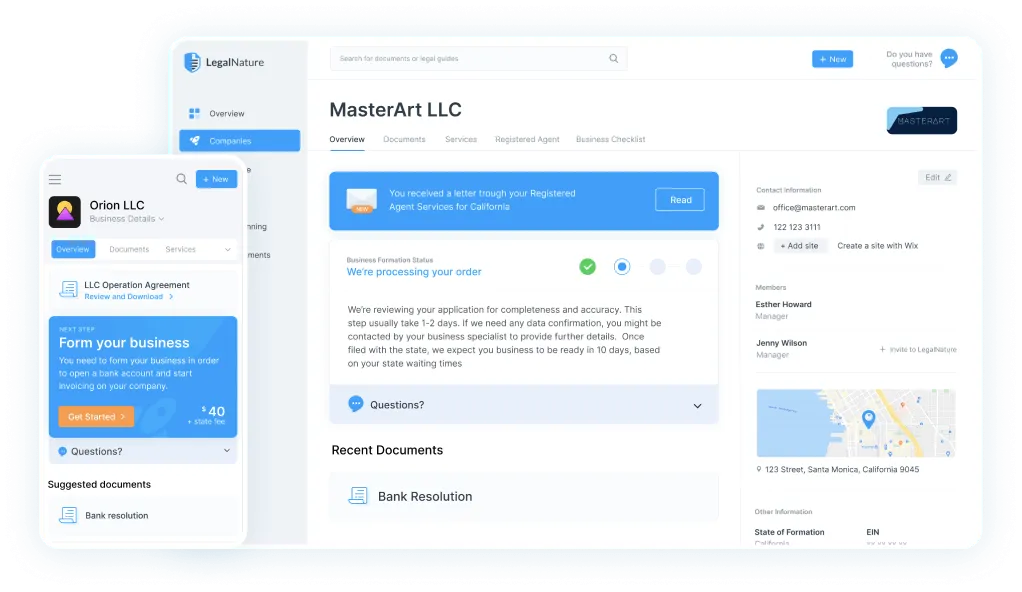Our articles of organization form
Provides step-by-step guidance
Is compliant throughout all states and DC
Dynamically changes to adjust to your particular needs
Start forming your company by answering simple questions
Create your articles in 3 steps

Start your own LLC
LegalNature can help you form your LLC quickly and easily. Our team of business experts take care of filing your articles of organization so you can focus on growing your business.

What our customers are saying
Create Your Articles of Organization in 3 Steps
Choose State
Select the state where the LLC will be registered
Our LLC articles of organization template dynamically changes according to the selected state's requirements. Since each state decides what details will be necessary in order to form an LLC, the required information can vary from one state to another.
Edit business details
Provide the LLC's name, company address, and other details
When choosing your LLC's name, it is important to consider your state's naming requirements. As for your LLC's company address, keep in mind that it will function as an official business address. For this reason, a street address will most likely be required.
Edit business team
Describe the LLC's management structure
Oftentimes an LLC will be managed either by a specific person who has been given the title of "manager" or by the LLC's members. If a manager is named, then that person will be authorized to handle the day-to-day activities of the LLC. On the other hand, if the members manage the LLC, each one will have the right to make management decisions.
Help Guide
LegalNature's intuitive form makes it easy to draft clear and legally compliant articles of organization. Below, you will find a detailed description of the most important sections and key components of your articles of organization. Note that some of these sections may be omitted from your document depending on how you answer the relevant questions and state-specific requirements.
Everything you need for your legal matters, one click away
You'll get a secure personalized dashboard that stores all of your legal forms. Edit, download, and print your documents at any time from any device.

Fast & Easy
Quickly create new documents or business services.
Safe & Secure
Your documents and information are always kept private.
Reliable & Trustworthy
Over 4,000 five star reviews from our customers.
Access Anytime
Everything you need, directly from your dashboard.